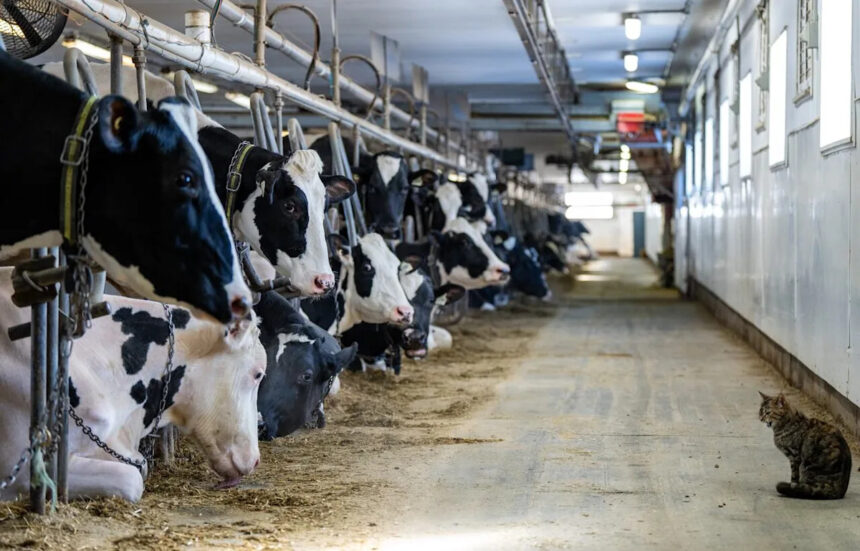The dairy shelves in your local supermarket might seem ordinary, but they’re actually ground zero for one of North America’s most persistent trade battles. Canadian dairy farms, with their iconic red barns dotting rural landscapes from Quebec to British Columbia, have become the unlikely center of a cross-border economic showdown that’s lasted longer than some Hollywood marriages.
American dairy producers, particularly those in states like Wisconsin and New York, have been pressing their government for years to crack open what they view as Canada’s protectionist dairy market. The frustration is palpable among U.S. producers who see untapped potential just across the border.
“We’ve been fighting this battle for decades,” says Tom Vilsack, U.S. Agriculture Secretary, who has made the dairy dispute a cornerstone of agricultural trade policy. “Canadian restrictions cost American dairy farmers hundreds of millions in potential exports.”
At the heart of this disagreement is Canada’s supply management system – a complex arrangement that controls production, sets prices, and imposes tariffs as high as 300% on dairy imports. The system, established in the 1970s, ensures Canadian dairy farmers receive stable prices for their milk, regardless of market fluctuations.
Canadian producers defend this approach fiercely. Pierre Lampron, president of Dairy Farmers of Canada, insists the system “ensures food security and fair incomes for family farms” while providing Canadians with high-quality dairy products. The average Canadian dairy farm – typically family-owned and considerably smaller than American industrial operations – produces about 85 cows’ worth of milk daily.
The United States-Mexico-Canada Agreement (USMCA), which replaced NAFTA in 2020, was supposed to ease tensions by granting American producers greater access to Canada’s dairy market. The deal included provisions for Canada to create new tariff-rate quotas specifically for U.S. dairy products, potentially allowing for millions in new exports.
But implementation has proven contentious. U.S. trade officials argue Canada hasn’t lived up to its commitments, pointing to how import licenses are allocated. Under Canada’s system, a significant portion of these licenses go to Canadian processors rather than directly to retailers who might import more American products.
A USMCA dispute panel ruled in favor of the U.S. in January 2022, finding Canada’s implementation inconsistent with the agreement. Canada modified its approach, but American officials remain unsatisfied with the changes, arguing they don’t meaningfully improve market access.
Data from Statistics Canada shows dairy imports from the U.S. increased about 8% following USMCA implementation – a gain, but far below what American producers anticipated. Meanwhile, Bank of Canada economists note the country’s dairy prices continue rising faster than overall inflation, suggesting limited competitive pressure from imports.
The financial stakes are substantial. The U.S. dairy industry estimates that full access to Canada’s market could generate over $1 billion in new exports annually. For Canadian producers, however, increased competition threatens a system that’s kept roughly 10,000 dairy farms economically viable despite global market volatility.
Beyond economics, the dispute reflects deeper questions about agricultural policies and food sovereignty. Canadian dairy farmers point to their environmental standards and animal welfare regulations as justification for protection. “Our system ensures sustainable production without the massive government subsidies American farmers receive,” argues Mathieu Frigon, CEO of the Dairy Processors Association of Canada.
American producers counter that Canadian consumers pay the price for protectionism. “Canadian families spend nearly $500 more annually on dairy products than Americans due to supply management,” claims Jaime Castaneda of the U.S. Dairy Export Council, citing research from the University of Calgary.
For everyday Canadians, the dispute surfaces most visibly in border towns, where some regularly cross into the U.S. to purchase cheaper dairy products – a practice technically illegal but rarely enforced for small quantities. The price differential is stark: a gallon of milk often costs 30-40% more in Toronto than in Buffalo.
The standoff has broader implications for North American trade relations. U.S. Trade Representative Katherine Tai has signaled that resolving the dairy dispute remains a priority, while Canadian officials maintain they’ve met their obligations under the agreement.
As both countries prepare for USMCA’s first formal review in 2026, dairy access will likely feature prominently in negotiations. Some trade experts suggest the dispute foreshadows coming tensions in other agricultural sectors and digital services.
For consumers on both sides of the border, the complex trade machinations translate into everyday realities: the price of cheese for a family pizza night, the sustainability of rural communities, and questions about who determines the true value of food.
What began as a dispute over milk quotas has evolved into something more fundamental – a test case for how neighboring countries balance free trade principles against domestic agricultural priorities in an era of increasing focus on food security and supply chain resilience.
As one Wisconsin dairy farmer put it, “This isn’t just about selling more cheese to Canada. It’s about whether trade agreements actually create the level playing field they promise.”






